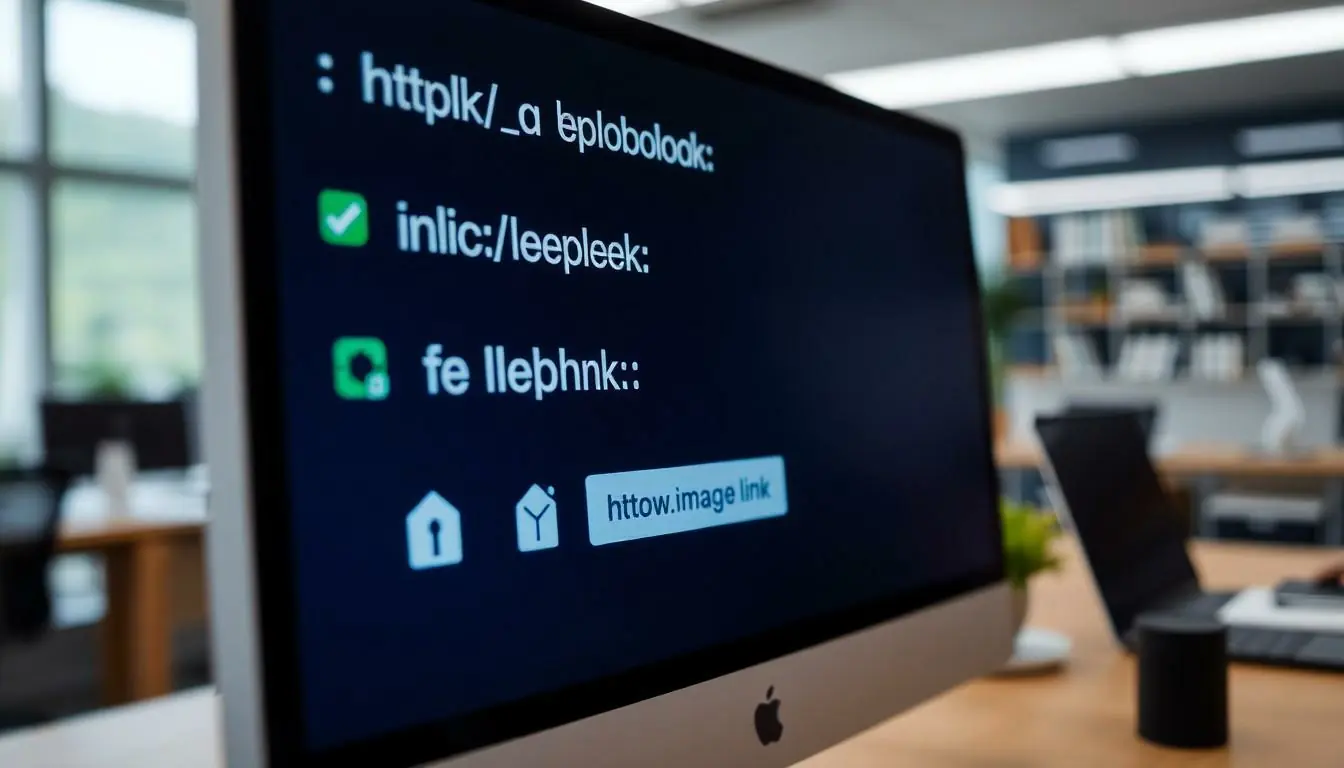In a world where technology often feels like magic, questions about AI capabilities pop up like weeds in a garden. One burning question that tickles the curiosity of many is whether ChatGPT can open links. Imagine having a digital assistant that not only chats but also navigates the web for you. Sounds like science fiction, right?
While ChatGPT dazzles with its conversational prowess, it doesn’t quite have the ability to click on links. It’s like having a brilliant friend who can tell you the best pizza place in town but can’t actually order the pizza for you. Understanding these limitations can help users harness the full potential of this AI marvel while keeping expectations in check. So, let’s dive into the nitty-gritty and explore what ChatGPT can and can’t do when it comes to opening links.
Table of Contents
ToggleOverview of ChatGPT Capabilities
ChatGPT serves as an advanced language model designed to assist users in generating text-based responses. This tool can provide information, answer questions, and engage in conversations on various topics. Strong text generation capabilities contribute to its effectiveness in mimicking human-like responses.
Knowledge encompasses a vast range of subjects, making it suitable for educational and professional contexts. This model sources information from training data that includes diverse text, ensuring well-informed replies. However, users must remember that its knowledge has limits, with the last training cut-off in October 2023.
Functionality includes understanding context and generating relevant answers based on input prompts. Despite this capability, ChatGPT cannot perform actions such as opening links or navigating the web. Users expect it to provide guidance and information, but these limitations are crucial for managing user expectations effectively.
Responses maintain engagement by focusing on clarity and coherence. Although the model provides accurate text-based information, reliance on it for real-time web navigation is misplaced. Knowing the bounds of its abilities empowers users to leverage its strengths without confusion.
Interactivity stands out as a core component of its design. Conversations with ChatGPT can flow smoothly, offering opportunities for users to explore topics in-depth. Enhanced ability to understand and respond to inquiries showcases its potential as a valuable resource, albeit within a confined scope.
Ultimately, ChatGPT’s design focuses on generating informative and coherent text. This approach fosters a productive user experience while highlighting the importance of recognizing its limitations in link interaction.
Understanding Link Interaction

ChatGPT cannot open links or navigate the web. Recognizing this limitation helps manage user expectations.
Types of Links
Links come in various forms, each serving a distinct purpose. Hyperlinks redirect users to web pages, providing information on specific topics. Bookmark links save locations for later reference, allowing ease of access. In addition, image links embed multimedia content, enhancing user engagement with visuals. Understanding these types enables users to effectively communicate their needs to ChatGPT, as it generates responses based solely on text input.
Contextual Use of Links
Context significantly influences how links are utilized. Providing context with links helps clarify what information users seek. When a user mentions a specific topic alongside a link, ChatGPT generates more relevant responses. Users often include links to enhance their messages, aiming for clearer communication. Contextualizing links allows ChatGPT to maximize its language capabilities while adhering to its limitations regarding web navigation.
User Experiences with ChatGPT
Users have shared a range of experiences with ChatGPT regarding its functionality. Feedback highlights both strengths and limitations.
Positive Feedback
Many users appreciate ChatGPT’s ability to provide detailed answers to various queries. Its conversational tone makes interactions feel engaging. Users often mention how effortlessly ChatGPT generates relevant responses. This capability enhances learning and exploration across numerous topics. Additionally, users value the model’s extensive knowledge, which covers a broad spectrum of subjects. Users find it especially beneficial for quick information retrieval in casual conversations.
Limitations Noted
Some users express disappointment over ChatGPT’s inability to open links. This limitation can interrupt the flow of information exchange, especially when users expect web navigation. Users often hope for real-time browsing capabilities but find that interactions remain text-based. Misunderstandings may arise when users do not recognize that ChatGPT cannot perform specific tasks like clicking links. Acknowledgment of these constraints can foster more productive dialogues. Users typically recommend clearer communication to help set their expectations regarding the model’s functionalities.
Technical Limitations of ChatGPT
ChatGPT has several technical limitations that influence its functionality. Understanding these constraints is crucial for effective use.
Programming Constraints
Programming choices restrict ChatGPT’s ability to interact with links. The architecture focuses on generating text-based responses rather than executing commands. This design prevents the model from browsing the internet, clicking links, or accessing real-time data. Algorithms prioritize natural language processing, emphasizing text generation over interactive web navigation. Consequently, users can expect comprehensive answers without the ability to open external content. Operating within these guidelines allows ChatGPT to deliver accurate information based on its vast training data.
Data Privacy Concerns
Data privacy issues further define ChatGPT’s functionality. The model doesn’t access user data or web links to ensure confidentiality. Conversations remain isolated, preventing any exposure of personal or sensitive information. Maintaining user privacy is paramount and shapes how the system operates. Limits on data retrieval reinforce this commitment to security. By not opening links, ChatGPT avoids potential vulnerabilities that could arise from unmonitored internet navigation. Overall, these considerations highlight the importance of secure interactions while using the model.
Future Implications
Understanding ChatGPT’s limitations paves the way for more strategic applications of the model. Users can enhance their inquiries by focusing on text-based interactions rather than expecting web navigation capabilities. This shift in approach empowers users to leverage ChatGPT’s strengths in generating informative content.
Advancements in AI technology may eventually lead to models with browsing abilities. Such development could alter user interactions, allowing for real-time information access. Until then, ChatGPT’s design prioritizes safe and secure text generation, ensuring privacy for each user.
Limitations shape the conversation dynamics between users and ChatGPT. They guide expectations toward a more informative dialogue rather than a browsing experience. With clear communication, users can engage effectively, asking targeted questions that align with the model’s capabilities.
AI’s potential to evolve remains substantial. Future iterations might integrate functionalities that could include link interactions. However, until such capabilities are realized, users should maintain awareness of the current boundaries, maximizing utility within existing frameworks.
Feedback from the user community plays a critical role in shaping future developments. Continuous input can inform how AI technologies expand, guiding developers towards desired features like web-enabled interaction. Therefore, collaboration between users and developers fosters growth within AI ecosystems.
Recognizing the limitations of ChatGPT is essential for maximizing its potential. While it excels in generating informative and coherent text, it can’t open links or navigate the web. This understanding helps users set realistic expectations and fosters more effective interactions.
By focusing on text-based queries and providing context, users can leverage ChatGPT’s strengths for deeper exploration of various topics. As AI technology evolves, future developments may introduce enhanced capabilities. For now, appreciating ChatGPT’s design ensures a secure and productive user experience.





